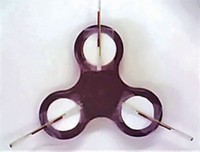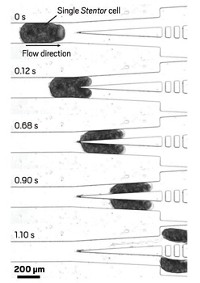Advertisement
Grab your lab coat. Let's get started
Welcome!
Welcome!
Create an account below to get 6 C&EN articles per month, receive newsletters and more - all free.
It seems this is your first time logging in online. Please enter the following information to continue.
As an ACS member you automatically get access to this site. All we need is few more details to create your reading experience.
Not you? Sign in with a different account.
Not you? Sign in with a different account.
ERROR 1
ERROR 1
ERROR 2
ERROR 2
ERROR 2
ERROR 2
ERROR 2
Password and Confirm password must match.
If you have an ACS member number, please enter it here so we can link this account to your membership. (optional)
ERROR 2
ACS values your privacy. By submitting your information, you are gaining access to C&EN and subscribing to our weekly newsletter. We use the information you provide to make your reading experience better, and we will never sell your data to third party members.
Microfluidics
Video: Simple methods speed up purification of lab-grown blood cells
Label-free sorting methods offer comparable purity to standard approaches, with lower costs and processing times
by Tien Nguyen, special to C&EN
October 21, 2020
| A version of this story appeared in
Volume 98, Issue 41
Plasmodium vivax is the most common parasite that causes malaria in Asia and South America. It preferentially infects an immature red blood cell that accounts for only 1–2% of circulating blood. The limited supply of these cells—called reticulocytes—has made it difficult to study P. vivax in the lab. Now, researchers at the Singapore-MIT Alliance for Research and Technology report two microfluidic methods for purifying lab-grown reticulocytes, one of which calls to mind the game Plinko from the game show The Price is Right (Lab Chip 2020, DOI: 10.1039/c9lc01128e). The team demonstrates that the cheap, microfluidic chip-based methods offer comparable purity and faster processing times compared with standard sorting methods. These purification methods could also help advance the field’s long-standing goal of manufacturing red blood cells for transfusions.
Subscribe to our YouTube channel to catch all of our chemistry news videos.
The following is the script for the video. We have edited the interviews within for length and clarity.
Tien Nguyen (voice-over): Carried by mosquitoes, Plasmodium vivax is one of five parasites that causes malaria in humans. This strain of malaria comes with severe health effects. But scientists have struggled to pin down this parasite in the lab to learn how to combat it. P. vivax is hard to study because it’s hard to get a hold of the cells it infects—immature blood cells called reticulocytes that only account for 1 to 2% of the blood in a person’s body.
Now, researchers at the Singapore-MIT Alliance for Research and Technology have refined two low-cost sorting methods that could increase scientists’ access to these rare reticulocytes for malaria research. These approaches could also help to one day make red blood cells for blood transfusions, which is a long-standing goal in the field.
Currently, manufacturing blood is impractical in terms of costs and scale.
Kerwin Kwek Zeming: The holy grail is to be able to produce blood and manufacture blood.
Tien Nguyen (voice-over): To make red blood cells, scientists start with donated bone marrow stem cells and culture the cells until they become reticulocytes. What scientists get out, however, is a mix of cells and cell parts that includes the reticulocytes but also cell nuclei and cells called erythroblasts. One standard way scientists purify this mixture is through an expensive process that involves labeling cells with dyes, called fluorescence-activated cell sorting—or FACS. In the new study, researchers compare FACS with two label-free and low-cost microfluidic methods for purifying cells to see if they can get similar results with cheaper methods.
One method is called deterministic lateral displacement. In this approach, the cells and cell components’ unique size and deformability cause them to interact differently with pillared structures. Like a rigged game of Plinko, reticulocytes tend to fall to the left, whereas nuclei and erythroblasts slide to the right. This method can produce reticulocyte collections that are as pure as those sorted by FACS but at two to three times the speed.
The other method is known as Dean flow fractionation. It relies on centrifugal and other forces to sort the mixture.
Jongyoon Han: That physics is quite complicated, but at the end of the day, the cells are . . . reorganize themselves in the channel based on their size.
Tien Nguyen (voice-over): In this method, reticulocytes fork to one side, while erythroblasts go to the other side. The nuclei go either way. This slightly lowers the method’s purity compared with FACS, but it offers a high flow rate with less risk of clogging.
Finally, the team demonstrated that purified reticulocytes weren’t damaged in either sorting process and that malaria parasites could infect the cells. The team can sort 100 million reticulocytes in less than 2h, about half the time that it would take with FACS.
Peter R. Preiser: The scale we are at right now, with the 100 million cells, that allows us actually to start doing practical experiments in terms of lab-based research, and that would already be a massive step forward. One unit of blood is a trillion cells, so there’s a bit of room to go.





Join the conversation
Contact the reporter
Submit a Letter to the Editor for publication
Engage with us on Twitter